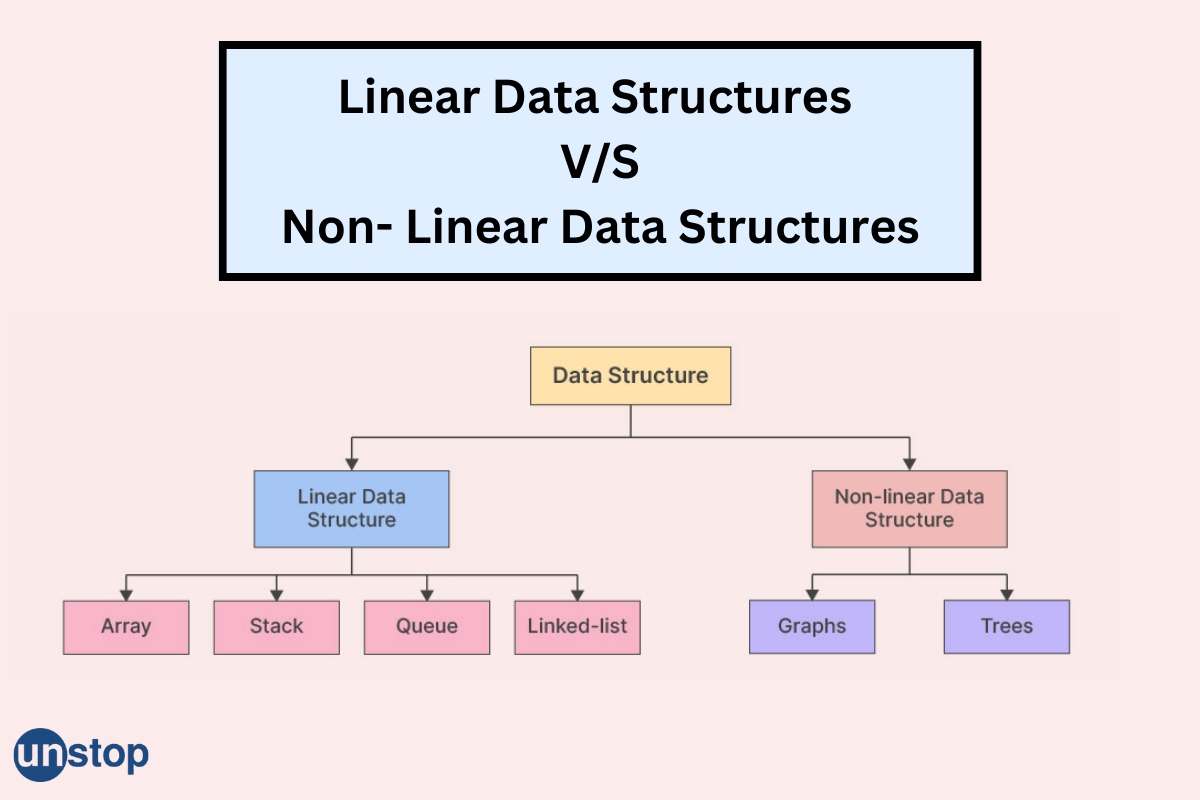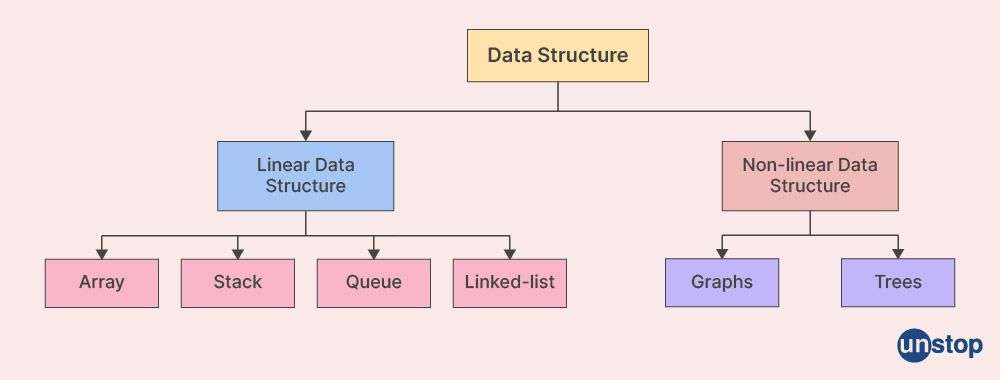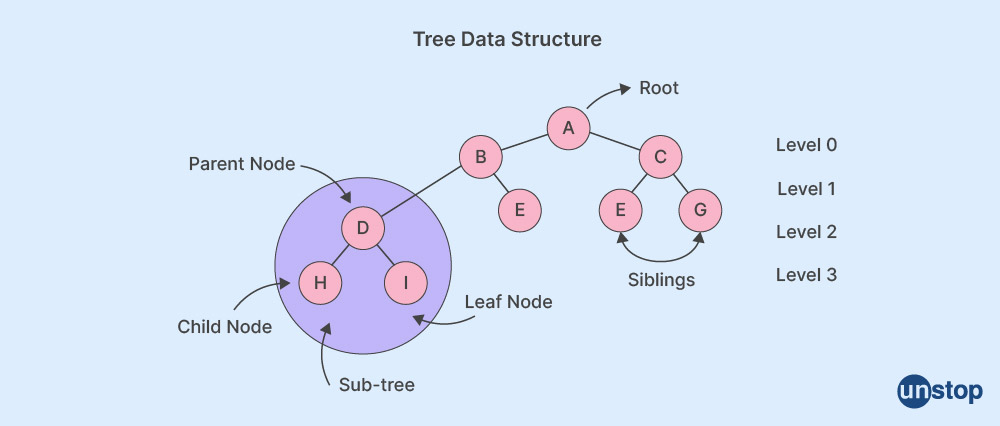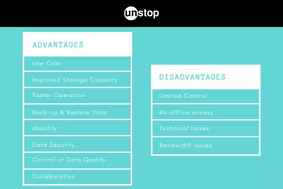- What Is Data Structure?
- Key Features Of Data Structures
- Basic Terminologies Related To Data Structures
- Types Of Data Structures
- What Are Linear Data Structures & Its Types?
- What Are Non-Linear Data Structures & Its Types?
- Importance Of Data Structure In Programming
- Basic Operations On Data Structures
- Applications Of Data Structures
- Real-Life Applications Of Data Structures
- Linear Vs. Non-linear Data Structures
- What Are Algorithms? The Difference Between Data Structures & Algorithms
- Conclusion
- Frequently Asked Questions
- What Is Asymptotic Notation?
- How Asymptotic Notation Helps In Analyzing Performance
- Types Of Asymptotic Notation
- Big-O Notation (O)
- Omega Notation (Ω)
- Theta Notation (Θ)
- Little-O Notation (o)
- Little-Omega Notation (ω)
- Summary Of Asymptotic Notations
- Real-World Applications Of Asymptotic Notation
- Conclusion
- Frequently Asked Questions
- Understanding Big O Notation
- Types Of Time Complexity
- Space Complexity In Big O Notation
- How To Determine Big O Complexity
- Best, Worst, And Average Case Complexity
- Applications Of Big O Notation
- Conclusion
- Frequently Asked Questions
- What Is Time Complexity?
- Why Do You Need To Calculate Time Complexity?
- The Time Complexity Algorithm Cases
- Time Complexity: Different Types Of Asymptotic Notations
- How To Calculate Time Complexity?
- Time Complexity Of Sorting Algorithms
- Time Complexity Of Searching Algorithms
- Writing And optimizing An algorithm
- What Is Space Complexity And Its Significance?
- Relation Between Time And Space Complexity
- Conclusion
- What Is Linear Data Structure?
- Key Characteristics Of Linear Data Structures
- What Are The Types Of Linear Data Structures?
- What Is An Array Linear Data Structure?
- What Are Linked Lists Linear Data Structure?
- What Is A Stack Linear Data Structure?
- What Is A Queue Linear Data Structure?
- Most Common Operations Performed in Linear Data Structures
- Advantages Of Linear Data Structures
- What Is Nonlinear Data Structure?
- Difference Between Linear & Non-Linear Data Structures
- Who Uses Linear Data Structures?
- Conclusion
- Frequently Asked Questions
- What is a linear data structure?
- What is a non-linear data structure?
- Difference between linear data structure and non-linear data structure
- FAQs about linear and non-linear data structures
- What Is Search?
- What Is Linear Search In Data Structure?
- What Is Linear Search Algorithm?
- Working Of Linear Search Algorithm
- Complexity Of Linear Search Algorithm In Data Structures
- Implementations Of Linear Search Algorithm In Different Programming Languages
- Real-World Applications Of Linear Search In Data Structure
- Advantages & Disadvantages Of Linear Search
- Best Practices For Using Linear Search Algorithm
- Conclusion
- Frequently Asked Questions
- What Is The Binary Search Algorithm?
- Conditions For Using Binary Search
- Steps For Implementing Binary Search
- Iterative Method For Binary Search With Implementation Examples
- Recursive Method For Binary Search
- Complexity Analysis Of Binary Search Algorithm
- Iterative Vs. Recursive Implementation Of Binary Search
- Advantages & Disadvantages Of Binary Search
- Practical Applications & Real-World Examples Of Binary Search
- Conclusion
- Frequently Asked Questions
- Understanding The Jump Search Algorithm
- How Jump Search Works?
- Code Implementation Of Jump Search Algorithm
- Time And Space Complexity Analysis
- Advantages Of Jump Search
- Disadvantages Of Jump Search
- Applications Of Jump Search
- Conclusion
- Frequently Asked Questions
- What Is Sorting In Data Structures?
- What Is Bubble Sort?
- What Is Selection Sort?
- What Is Insertion Sort?
- What Is Merge Sort?
- What Is Quick Sort?
- What Is Heap Sort?
- What Is Radix Sort?
- What Is Bucket Sort?
- What Is Counting Sort?
- What Is Shell Sort?
- Choosing The Right Sorting Algorithm
- Applications Of Sorting
- Conclusion
- Frequently Asked Questions
- Understanding Bubble Sort Algorithm
- Bubble Sort Algorithm
- Implementation Of Bubble Sort In C++
- Time And Space Complexity Analysis Of Bubble Sort Algorithm
- Advantages Of Bubble Sort Algorithm
- Disadvantages Of Bubble Sort Algorithm
- Applications of Bubble Sort Algorithms
- Conclusion
- Frequently Asked Questions
- Understanding The Merge Sort Algorithm
- Algorithm For Merge Sort
- Implementation Of Merge Sort In C++
- Time And Space Complexity Analysis Of Merge Sort
- Advantages And Disadvantages Of Merge Sort
- Applications Of Merge Sort
- Conclusion
- Frequently Asked Questions
- Understanding The Selection Sort Algorithm
- Algorithmic Approach To Selection Sort
- Implementation Of Selection Sort Algorithm
- Complexity Analysis Of Selection Sort
- Comparison Of Selection Sort With Other Sorting Algorithms
- Advantages And Disadvantages Of Selection Sort
- Application Of Selection Sort
- Conclusion
- Frequently Asked Questions
- What Is Insertion Sort Algorithm?
- How Does Insertion Sort Work? (Step-by-Step Explanation)
- Implementation of Insertion Sort in C++
- Time And Space Complexity Of Insertion Sort
- Applications Of Insertion Sort Algorithm
- Comparison With Other Sorting Algorithms
- Conclusion
- Frequently Asked Questions
- Understanding Quick Sort Algorithm
- Step-By-Step Working Of Quick Sort
- Implementation Of Quick Sort Algorithm
- Time Complexity Analysis Of Quick Sort
- Advantages Of Quick Sort Algorithm
- Disadvantages Of Quick Sort Algorithm
- Applications Of Quick Sort Algorithm
- Conclusion
- Frequently Asked Questions
- Understanding The Heap Data Structure
- Working Of Heap Sort Algorithm
- Implementation Of Heap Sort Algorithm
- Advantages Of Heap Sort
- Disadvantages Of Heap Sort
- Real-World Applications Of Heap Sort
- Conclusion
- Frequently Asked Questions
- Understanding The Counting Sort Algorithm
- Conditions For Using Counting Sort Algorithm
- How Counting Sort Algorithm Works?
- Implementation Of Counting Sort Algorithm
- Time And Space Complexity Analysis Of Counting Sort
- Comparison Of Counting Sort With Other Sorting Algorithms
- Advantages Of Counting Sort Algorithm
- Disadvantages Of Counting Sort Algorithm
- Applications Of Counting Sort Algorithm
- Conclusion
- Frequently Asked Questions
- Understanding Shell Sort Algorithm
- Working Of Shell Sort Algorithm
- Implementation Of Shell Sort Algorithm
- Time Complexity Analysis Of Shell Sort Algorithm
- Advantages Of Shell Sort Algorithm
- Disadvantages Of Shell Sort Algorithm
- Applications Of Shell Sort Algorithm
- Conclusion
- Frequently Asked Questions
- What Is Linked List In Data Structures?
- Types Of Linked Lists In Data Structures
- Linked List Operations In Data Structures
- Advantages And Disadvantages Of Linked Lists In Data Structures
- Comparison Of Linked Lists And Arrays
- Applications Of Linked Lists
- Conclusion
- Frequently Asked Questions
- What Is A Singly Linked List In Data Structure?
- Insertion Operations On Singly Linked Lists
- Deletion Operation On Singly Linked List
- Searching For Elements In Single Linked List
- Calculating Length Of Single Linked List
- Practical Applications Of Singly Linked Lists In Data Structure
- Common Problems With Singly Linked Lists
- Conclusion
- Frequently Asked Questions (FAQ)
- What Is A Linked List?
- Reverse A Linked List
- How To Reverse A Linked List? (Approaches)
- Recursive Approach To Reverse A Linked List
- Iterative Approach To Reverse A Linked List
- Using Stack To Reverse A Linked List
- Complexity Analysis Of Different Approaches To Reverse A Linked List
- Conclusion
- Frequently Asked Questions
- What Is A Stack In Data Structure?
- Understanding Stack Operations
- Stack Implementation In Data Structures
- Stack Implementation Using Arrays
- Stack Implementation Using Linked Lists
- Comparison: Array vs. Linked List Implementation
- Applications Of Stack In Data Structures
- Advantages And Disadvantages Of Stack Data Structure
- Conclusion
- Frequently Asked Questions
- What Is A Graph Data Structure?
- Importance Of Graph Data Structures
- Types Of Graphs In Data Structure
- Types Of Graph Algorithms
- Application Of Graphs In Data Structures
- Challenges And Complexities In Graphs
- Conclusion
- Frequently Asked Questions
- What Is Tree Data Structure?
- Terminologies Of Tree Data Structure:
- Different Types Of Tree Data Structures
- Basic Operations On Tree Data Structure
- Applications Of Tree Data Structures
- Comparison Of Trees, Graphs, And Linear Data Structures
- Advantages Of Tree Data Structure
- Disadvantages Of Tree Data Structure
- Conclusion
- Frequently Asked Questions
- What Is Dynamic Programming?
- Real-Life Example: The Jigsaw Puzzle Analogy
- How To Solve A Problem Using Dynamic Programming?
- Dynamic Programming Algorithm Techniques
- Advantages Of Dynamic Programming
- Disadvantages Of Dynamic Programming
- Applications Of Dynamic Programming
- Conclusion
- Frequently Asked Questions
- Understanding The Sliding Window Algorithm
- How Does The Sliding Window Algorithm Works?
- How To Identify Sliding Window Problems?
- Fixed-Size Sliding Window Example: Maximum Sum Subarray Of Size k
- Variable-Size Sliding Window Example: Smallest Subarray With A Given Sum
- Advantages Of Sliding Window Technique
- Disadvantages Of Sliding Window Technique
- Conclusion
- Frequently Asked Questions
- Introduction To Data Structures
- Data Structures Interview Questions: Basics
- Data Structures Interview Questions: Intermediate
- Data Structures Interview Questions: Advanced
- Conclusion
What is The Difference Between Linear And Non Linear Data Structure?

A data structure refers to organizing and storing data in a computer's memory in a way that enables efficient access, manipulation, and retrieval of the data. Data structures are fundamental concepts in computer science and are extensively used in programming and software development to solve various computational problems.
There are two categories of data structure - linear data structure and non-linear data structure. In real life, linear data structure is used to develop software, and non-linear data structure is used in image processing and artificial intelligence.

In this article, we will understand the difference between linear and non-linear data structures.
Looking for software engineering jobs? Here are some that you shouldn't miss out on!
What is a linear data structure?
A linear data structure is a type of data structure that stores the data linearly or sequentially. In the linear data structure, data is arranged in such a way that one element is adjacent to its previous and the next element. It includes the data at a single level such that we can traverse all data into a single run.
The implementation of the linear data structure is always easy as it stores the data linearly. The common examples of linear data types are Stack, Queue, Array, LinkedList, and Hashmap, etc.
Brush up your knowledge! Browse through the important Data Structures interview questions
Here, we have briefly explained every linear data type below:
1. Stack
Users can push/pop data from a single end of the stack. Users can insert the data into the stack via push operation and remove data from the stack via pop operation. The stack follows the rule of LIFO (last in first out). Users can access all the stack data from the top of the stack in a linear manner.

In real-life problems, the stack data structure is used in many applications. For example, the All web browser uses the stack to store the backward/forward operations.
2. Queue
Queue data structure stores the data in a linear sequence. Queue data structure follows the FIFO rule, which means first-in-first-out. It is similar to the stack data structure, but it has two ends. In the queue, we can perform insertion operations from the rear using the Enqueue method and deletion operations from the front using the deque method.

Escalator is one of the best real-life examples of the queue.
3. Array
The array is the most used Linear data type. The array stores the objects of the same data type in a linear fashion. Users can use an array to construct all linear or non-linear data structures. For example, Inside the car management software to store the car names array of the strings is useful.

We can access the element of the array by the index of elements. In an array, the index always starts at 0. To prevent memory wastage, users should create an array of dynamic sizes.
4. LinkedList
LinkedList data structure stores the data in the form of a node. Every linked list node contains the element value and address pointer. The address pointer of the LinkedList consists of the address of the next node. It can store unique or duplicate elements.

What is a non-linear data structure?
In a non-linear data structure, data is connected to its previous, next, and more elements like a complex structure. In simple terms, data is not organized sequentially in such a type of data structure.
It is one type of Non-primitive data structure. In non-linear data structures, data is not stored linear manner. There are multiple levels of nonlinear data structures. It is also called a multilevel data structure. It is important to note here that we can't implement non-linear data structures as easily as linear data structures.
1. Tree
A tree data structure is an example of a nonlinear data structure. It is a collection of nodes where each node consists of the data element. Every tree structure contains a single root node.

In the tree, every child node is connected to the parent node. Every parent and child node has a parent-child node relationship. In the tree, Nodes remaining at the last level are called leaf nodes, and other nodes are called internal nodes.
Types of trees:
- Binary tree
- Binary search tree
- AVL tree
- Red-black tree
The Heap data structure is also a non-linear tree-based data structure, and it uses the complete binary tree to store the data.
2. Graph
The graph contains vertices and edges. Every vertex of the graph stores the data element. Edges are used to build a vertices relationship. Social networks are real-life examples of graph data structure.

Here, we can consider the user as a vertex, and the relation between him/her with other users is called an edge. There is no limitation for building the relationship between any two vertexes of the graph like a tree. We can implement the graph data structure using the array or LinkedList.
Types of the graph:
- Simple Graph
- Un-directed Graph
- Directed Graph
- Weighted Graph
3. Hashmap
Hashmaps store data as key-value pairs. It can be either linear or non-linear data structure. We can use the hashmap to map the value with its keys and search value efficiently from it.

The above-explained data structures are fundamental data structures.
Difference between linear data structure and non-linear data structure
Here, we have explained the key difference between linear and non-linear data structure in the table format.
| Linear data structure | non-linear data structure |
| The linear relationship is present between data elements. | Data elements have a hierarchical relationship. |
| Every element makes a connection to only its previous and next elements. | Every element makes a connection to more than two elements. |
| We can traverse it in a single run as it is linear. | We can't traverse it in a single run as it is a non-linear structure. |
| It is a single-level data structure. | It is a multi-level data structure. |
| The utilization of memory is not efficient. | Memory utilization is efficient. |
| Time complexity increases if we need to traverse through a large dataset. | Time complexity doesn't change much if we need to traverse through the large input size. |
| It is used to build an operating system and compiler design. | All Social networks, telephone networks, Artificial intelligence, and image processing are using non-linear data structures. |
| Examples: Array, stack, queue, LinkedList | Example: Graph, map, tree, heap data structure |
| It is easy to implement. | It is complex to implement. However, we can implement it easily, as nonlinear data structures include a powerful algorithm to implement them. |
The main use of the data structure is to build efficient algorithms such as sorting algorithms. Stack, queue, array, etc., have a linear relationship between the data elements, while graph, tree, hashmap, etc., have a complex relationship with the data.
FAQs about Linear and Non-Linear Data Structures
1. Which data structure is non-linear?
A linear data structure is where elements are organized sequentially. In this each element has a predecessor (except for the first element) and a successor (except for the last element). Examples of non-linear data structures are linked-list, arrays, queues, etc.
2. How to choose between linear and non-linear data structures?
The choice between linear and non-linear data structures depends on the nature of the data and the specific operations or algorithms you need to perform on that data. For example, graphs (non-linear data structure) are used for modeling networks (social networks, transportation networks), pathfinding algorithms, and data modeling.
3. What are queues used for?
Queues are used for managing and organizing data in a way that follows the First-In-First-Out (FIFO) principle. They find applications in scenarios where the order of processing or execution matters and where elements need to be processed in the order they were added. For example, in task scheduling algorithms.
4. What are linked lists?
A linked list is a linear data structure used to organize and store a collection of elements called nodes. Each node contains two main components: data and a reference to the next node in the sequence. Linked lists are helpful when the number of elements in a data structure may change frequently. A linked list has a head (starting node) and a tail (last node).
You might also be interested in reading:
As a biotechnologist-turned-writer, I love turning complex ideas into meaningful stories that inform and inspire. Outside of writing, I enjoy cooking, reading, and travelling, each giving me fresh perspectives and inspiration for my work.
Login to continue reading
And access exclusive content, personalized recommendations, and career-boosting opportunities.
Subscribe
to our newsletter
Blogs you need to hog!

This Is My First Hackathon, How Should I Prepare? (Tips & Hackathon Questions Inside)

10 Best C++ IDEs That Developers Mention The Most!

Advantages and Disadvantages of Cloud Computing That You Should Know!













Comments
Add comment